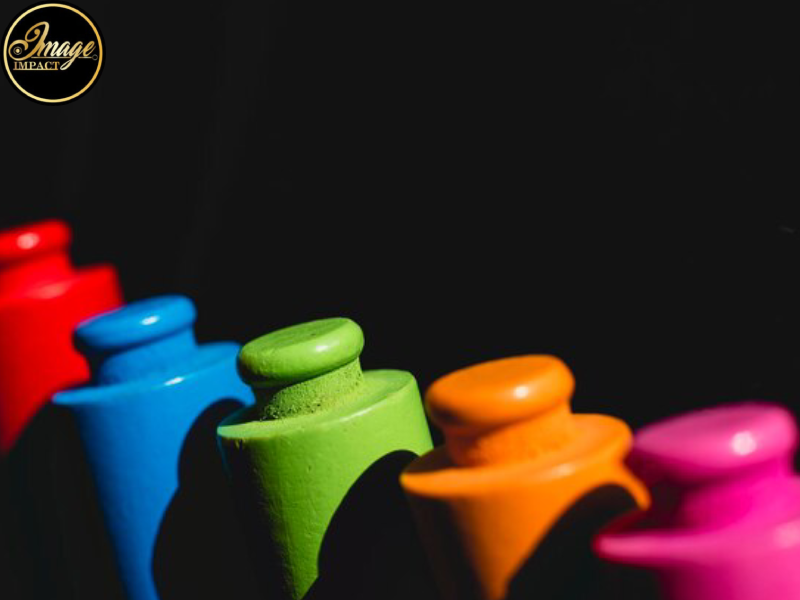The Psychology of Color in Advertising: How Color Influences Perception and Behavior
Color is a powerful tool in advertising, capable of evoking emotions, influencing perceptions, and driving consumer behavior. Understanding the psychology of color can help marketers craft compelling messages that resonate with their target audience. Here\’s an exploration of how different colors impact perception and behavior in advertising.
The Basics of Color Psychology
Color psychology is the study of how colors affect human emotions and behaviors. Different colors can evoke different feelings and associations, which can vary based on cultural, personal, and contextual factors. In advertising, leveraging these associations can enhance brand identity, create desired impressions, and drive specific actions.
Common Color Associations and Their Effects
- Red
- Emotions: Excitement, passion, urgency, love
- Behavior: Stimulates appetite, increases heart rate, creates a sense of urgency (e.g., clearance sales)
- Usage: Often used in fast food advertising, clearance sales, and to grab immediate attention
- Blue
- Emotions: Trust, calmness, serenity, professionalism
- Behavior: Promotes a sense of security and reliability
- Usage: Commonly used by banks, tech companies, and healthcare providers to convey trust and dependability
- Yellow
- Emotions: Optimism, happiness, warmth, caution
- Behavior: Captures attention quickly, can stimulate mental processes and energy
- Usage: Used to grab attention in window displays, billboards, and in products meant to evoke cheerfulness and energy
- Green
- Emotions: Health, tranquility, nature, growth
- Behavior: Associated with environmental products, promotes relaxation and balance
- Usage: Frequently used in advertisements for eco-friendly products, health and wellness brands, and financial services
- Orange
- Emotions: Enthusiasm, creativity, warmth, caution
- Behavior: Calls to action without the intensity of red, promotes energy and fun
- Usage: Used in marketing for products targeting younger audiences, calls to action, and sales promotions
- Purple
- Emotions: Luxury, creativity, wisdom, spirituality
- Behavior: Implies quality and exclusivity, can stimulate problem-solving and creativity
- Usage: Common in advertisements for luxury goods, beauty products, and creative industries
- Black
- Emotions: Sophistication, power, elegance, mystery
- Behavior: Conveys exclusivity and high-end appeal
- Usage: Frequently used in luxury brand advertising, high-end fashion, and technology products
- White
- Emotions: Purity, simplicity, cleanliness, peace
- Behavior: Creates a sense of space and simplicity, can highlight other colors
- Usage: Used in minimalist designs, healthcare, and tech products to convey simplicity and cleanliness
- Pink
- Emotions: Romance, femininity, calm, love
- Behavior: Often used to target female consumers, conveys softness and nurturing
- Usage: Popular in advertisements for beauty products, romantic-themed items, and products aimed at women and young girls
Cultural Considerations
Color meanings can vary significantly across different cultures. For example:
- White: While white signifies purity and peace in Western cultures, it is often associated with mourning in some Eastern cultures.
- Red: In China, red is a color of luck and prosperity, whereas it can signify danger or warning in Western contexts. Understanding these cultural differences is crucial for global marketing campaigns to avoid misinterpretations and to effectively reach diverse audiences.
Strategic Use of Color in Advertising
- Brand Identity:
- Choosing a color that aligns with your brand\’s values and message can create a strong, recognizable identity. Consistent use of a specific color palette helps reinforce brand recognition.
- Emotional Appeal:
- Colors can be used to evoke specific emotions in your audience. For example, a calming blue for a healthcare brand can instill a sense of trust and security.
- Call to Action (CTA):
- Colors in CTAs should stand out and convey urgency or importance. Red and orange are popular choices for their ability to grab attention and prompt action.
- Target Audience:
- Understanding the preferences and behaviors of your target audience can inform your color choices. Younger audiences may respond better to bright, energetic colors, while older demographics might prefer more subdued tones.
- Contrast and Readability:
- Ensure that the text and background colors contrast well to improve readability. Poor color contrast can detract from the message and reduce engagement.
Case Studies
- Coca-Cola:
- The iconic red color of Coca-Cola evokes excitement, energy, and appetite, contributing to its brand identity as a fun and dynamic beverage choice.
- Apple:
- Apple’s white and minimalist design emphasizes simplicity, elegance, and sophistication, aligning with its brand message of innovation and premium quality.
- McDonald\’s:
- McDonald\’s uses a combination of red and yellow, colors that stimulate hunger and attract attention, effectively driving consumer engagement and sales.
Conclusion
The psychology of color in advertising is a powerful tool that can influence perception and behavior. By understanding different colors\’ emotional and cultural associations, marketers can create compelling and effective advertisements that resonate with their target audience. Thoughtful and strategic use of color can enhance brand identity, evoke desired emotions, and drive consumer action, ultimately contributing to the success of advertising campaigns.
Color is a powerful tool in advertising, capable of evoking emotions, influencing perceptions, and driving consumer behavior. Understanding the psychology of color can help marketers craft compelling messages that resonate with their target audience. Here\’s an exploration of how different colors impact perception and behavior in advertising.
The Basics of Color Psychology
Color psychology is the study of how colors affect human emotions and behaviors. Different colors can evoke different feelings and associations, which can vary based on cultural, personal, and contextual factors. In advertising, leveraging these associations can enhance brand identity, create desired impressions, and drive specific actions.
Common Color Associations and Their Effects
- Red
- Emotions: Excitement, passion, urgency, love
- Behavior: Stimulates appetite, increases heart rate, creates a sense of urgency (e.g., clearance sales)
- Usage: Often used in fast food advertising, clearance sales, and to grab immediate attention
- Blue
- Emotions: Trust, calmness, serenity, professionalism
- Behavior: Promotes a sense of security and reliability
- Usage: Commonly used by banks, tech companies, and healthcare providers to convey trust and dependability
- Yellow
- Emotions: Optimism, happiness, warmth, caution
- Behavior: Captures attention quickly, can stimulate mental processes and energy
- Usage: Used to grab attention in window displays, billboards, and in products meant to evoke cheerfulness and energy
- Green
- Emotions: Health, tranquility, nature, growth
- Behavior: Associated with environmental products, promotes relaxation and balance
- Usage: Frequently used in advertisements for eco-friendly products, health and wellness brands, and financial services
- Orange
- Emotions: Enthusiasm, creativity, warmth, caution
- Behavior: Calls to action without the intensity of red, promotes energy and fun
- Usage: Used in marketing for products targeting younger audiences, calls to action, and sales promotions
- Purple
- Emotions: Luxury, creativity, wisdom, spirituality
- Behavior: Implies quality and exclusivity, can stimulate problem-solving and creativity
- Usage: Common in advertisements for luxury goods, beauty products, and creative industries
- Black
- Emotions: Sophistication, power, elegance, mystery
- Behavior: Conveys exclusivity and high-end appeal
- Usage: Frequently used in luxury brand advertising, high-end fashion, and technology products
- White
- Emotions: Purity, simplicity, cleanliness, peace
- Behavior: Creates a sense of space and simplicity, can highlight other colors
- Usage: Used in minimalist designs, healthcare, and tech products to convey simplicity and cleanliness
- Pink
- Emotions: Romance, femininity, calm, love
- Behavior: Often used to target female consumers, conveys softness and nurturing
- Usage: Popular in advertisements for beauty products, romantic-themed items, and products aimed at women and young girls
Cultural Considerations
Color meanings can vary significantly across different cultures. For example:
- White: While white signifies purity and peace in Western cultures, it is often associated with mourning in some Eastern cultures.
- Red: In China, red is a color of luck and prosperity, whereas it can signify danger or warning in Western contexts. Understanding these cultural differences is crucial for global marketing campaigns to avoid misinterpretations and to effectively reach diverse audiences.
Strategic Use of Color in Advertising
- Brand Identity:
- Choosing a color that aligns with your brand\’s values and message can create a strong, recognizable identity. Consistent use of a specific color palette helps reinforce brand recognition.
- Emotional Appeal:
- Colors can be used to evoke specific emotions in your audience. For example, a calming blue for a healthcare brand can instill a sense of trust and security.
- Call to Action (CTA):
- Colors in CTAs should stand out and convey urgency or importance. Red and orange are popular choices for their ability to grab attention and prompt action.
- Target Audience:
- Understanding the preferences and behaviors of your target audience can inform your color choices. Younger audiences may respond better to bright, energetic colors, while older demographics might prefer more subdued tones.
- Contrast and Readability:
- Ensure that the text and background colors contrast well to improve readability. Poor color contrast can detract from the message and reduce engagement.
Case Studies
- Coca-Cola:
- The iconic red color of Coca-Cola evokes excitement, energy, and appetite, contributing to its brand identity as a fun and dynamic beverage choice.
- Apple:
- Apple’s white and minimalist design emphasizes simplicity, elegance, and sophistication, aligning with its brand message of innovation and premium quality.
- McDonald\’s:
- McDonald\’s uses a combination of red and yellow, colors that stimulate hunger and attract attention, effectively driving consumer engagement and sales.
Conclusion
The psychology of color in advertising is a powerful tool that can influence perception and behavior. By understanding different colors\’ emotional and cultural associations, marketers can create compelling and effective advertisements that resonate with their target audience. Thoughtful and strategic use of color can enhance brand identity, evoke desired emotions, and drive consumer action, ultimately contributing to the success of advertising campaigns.

